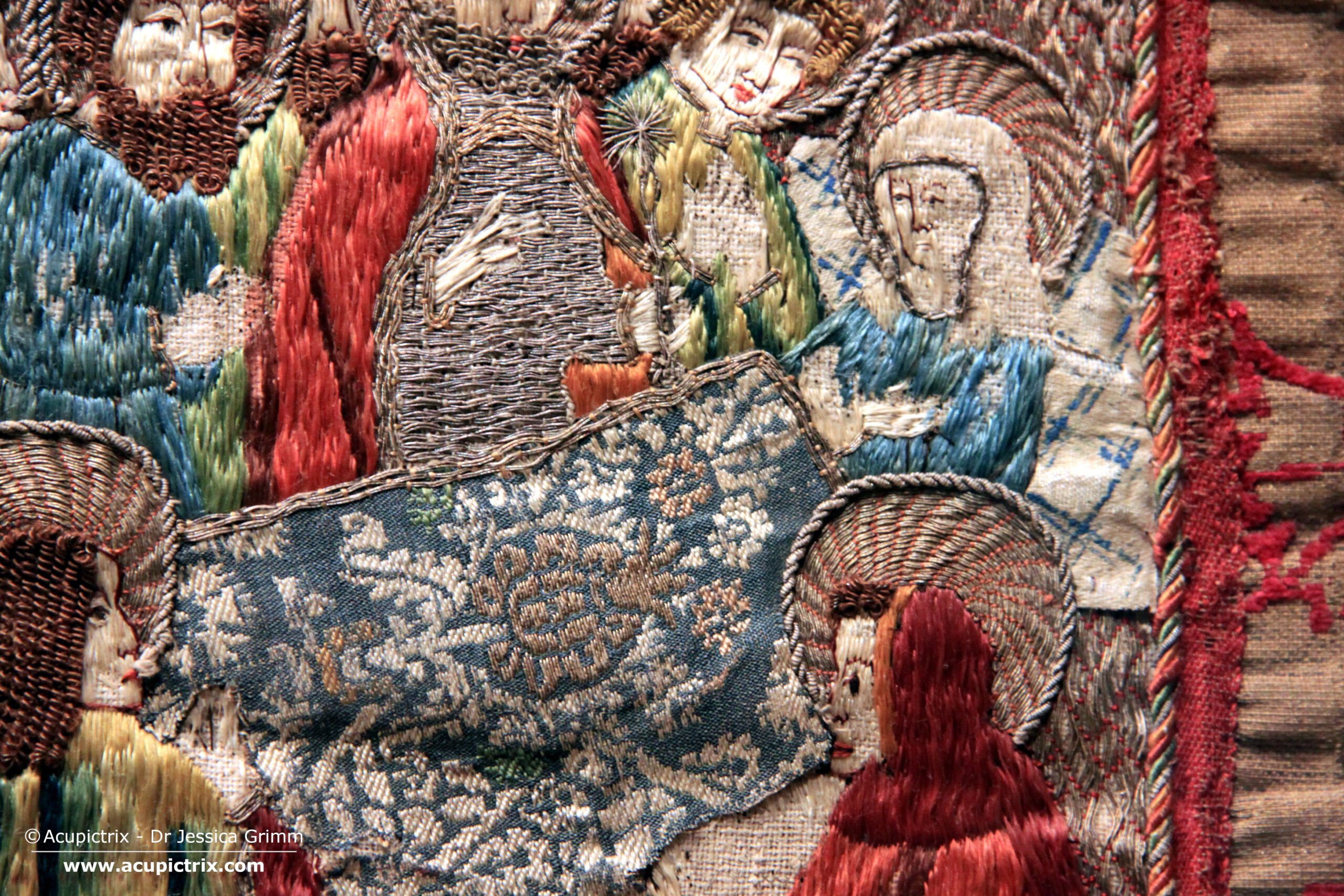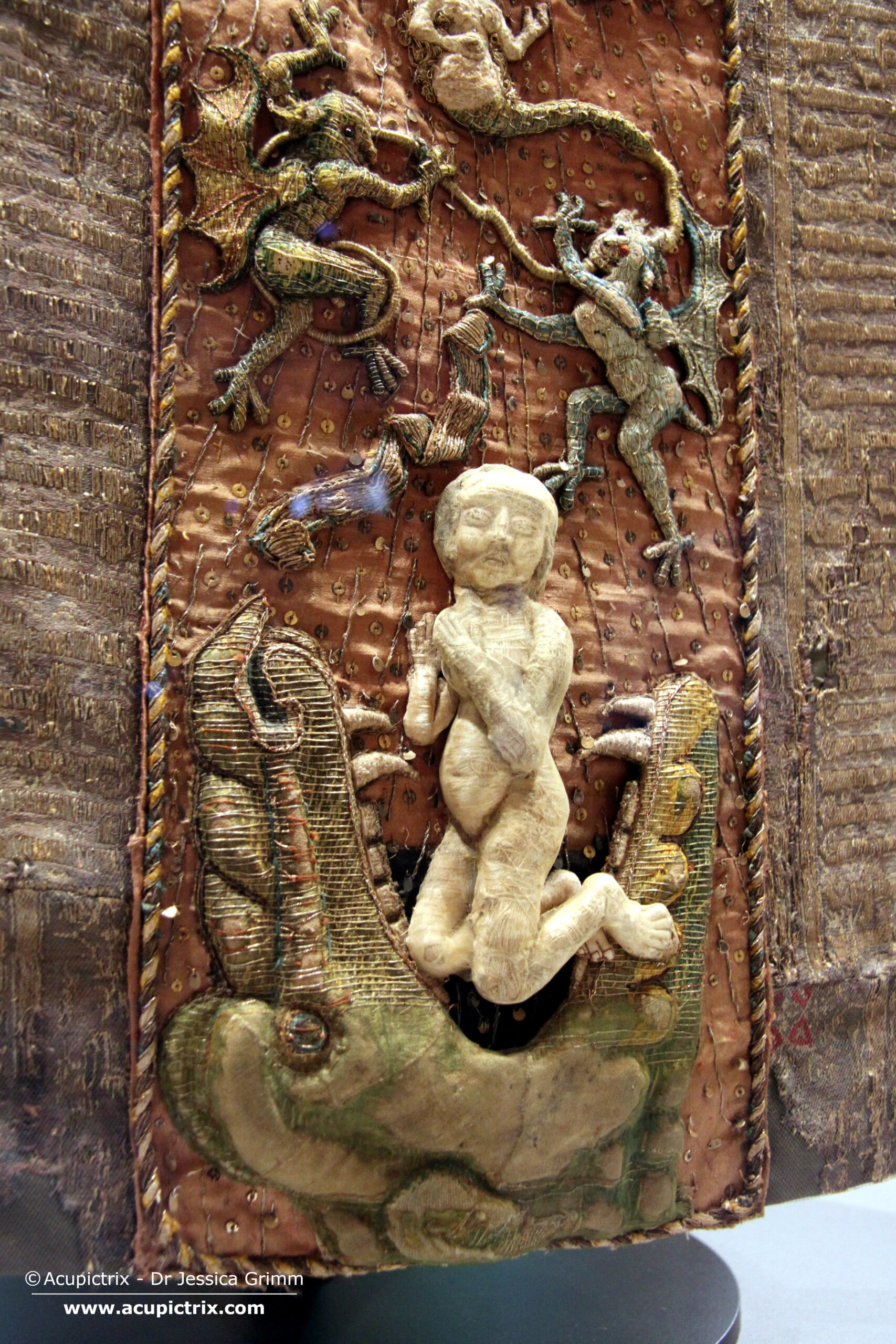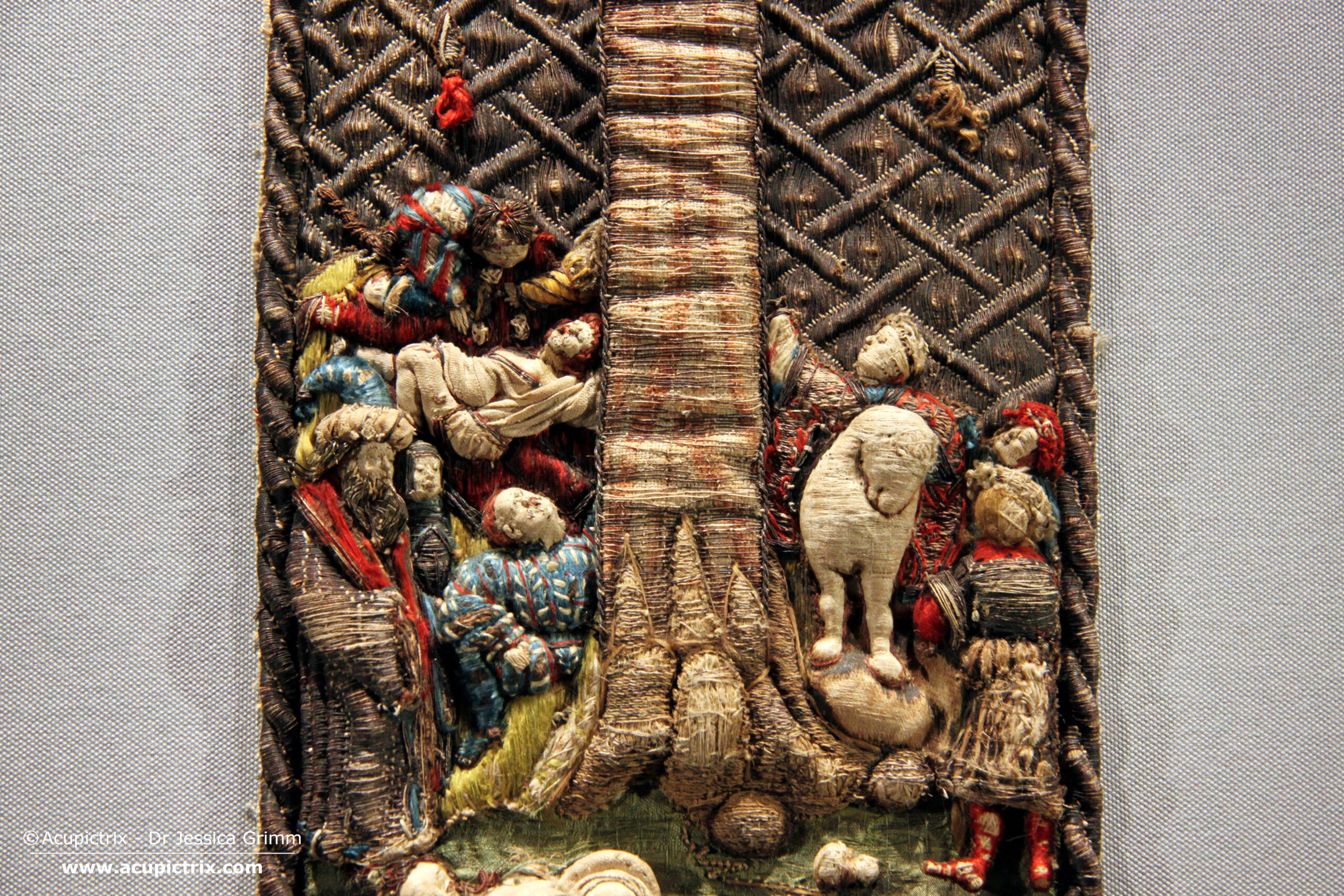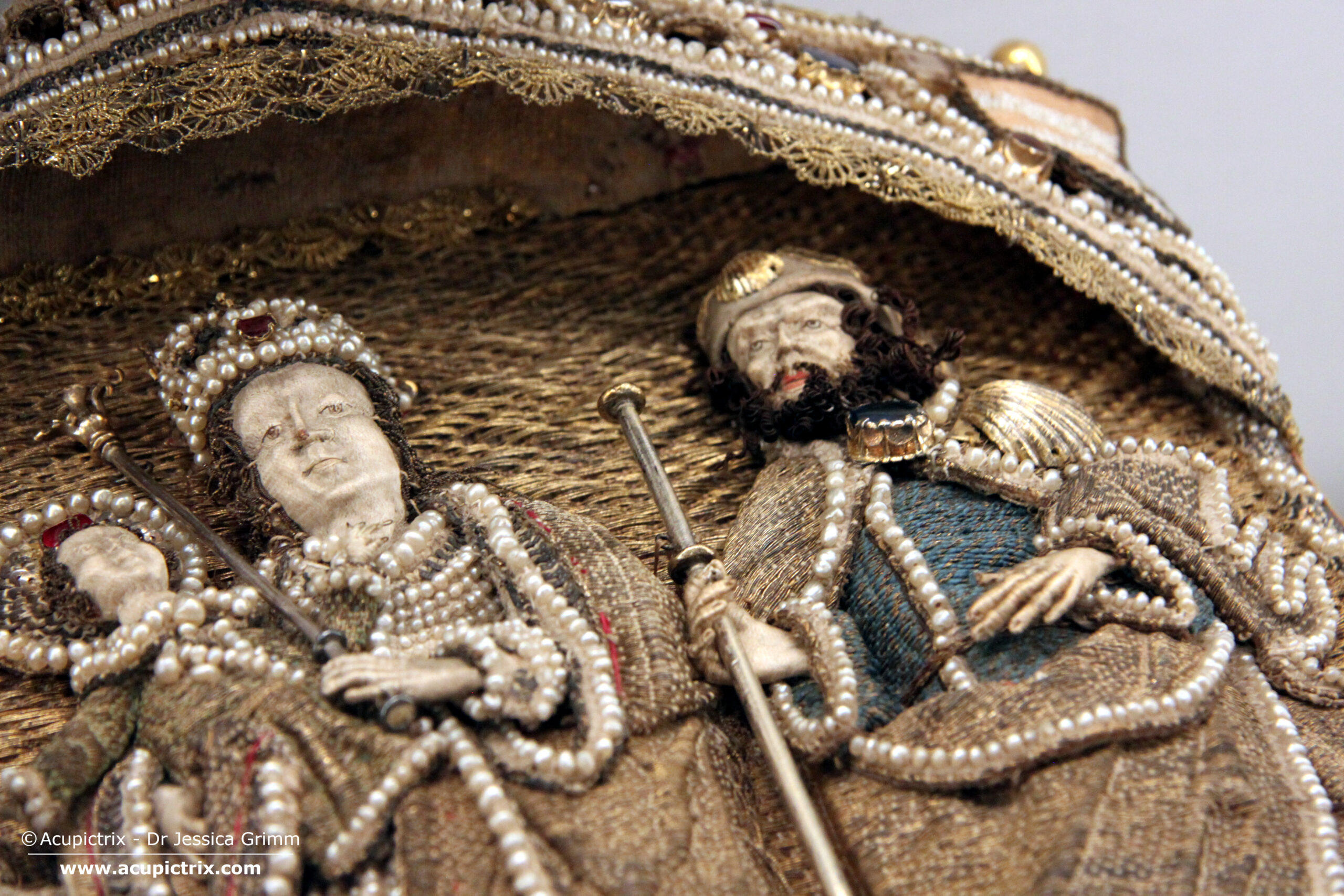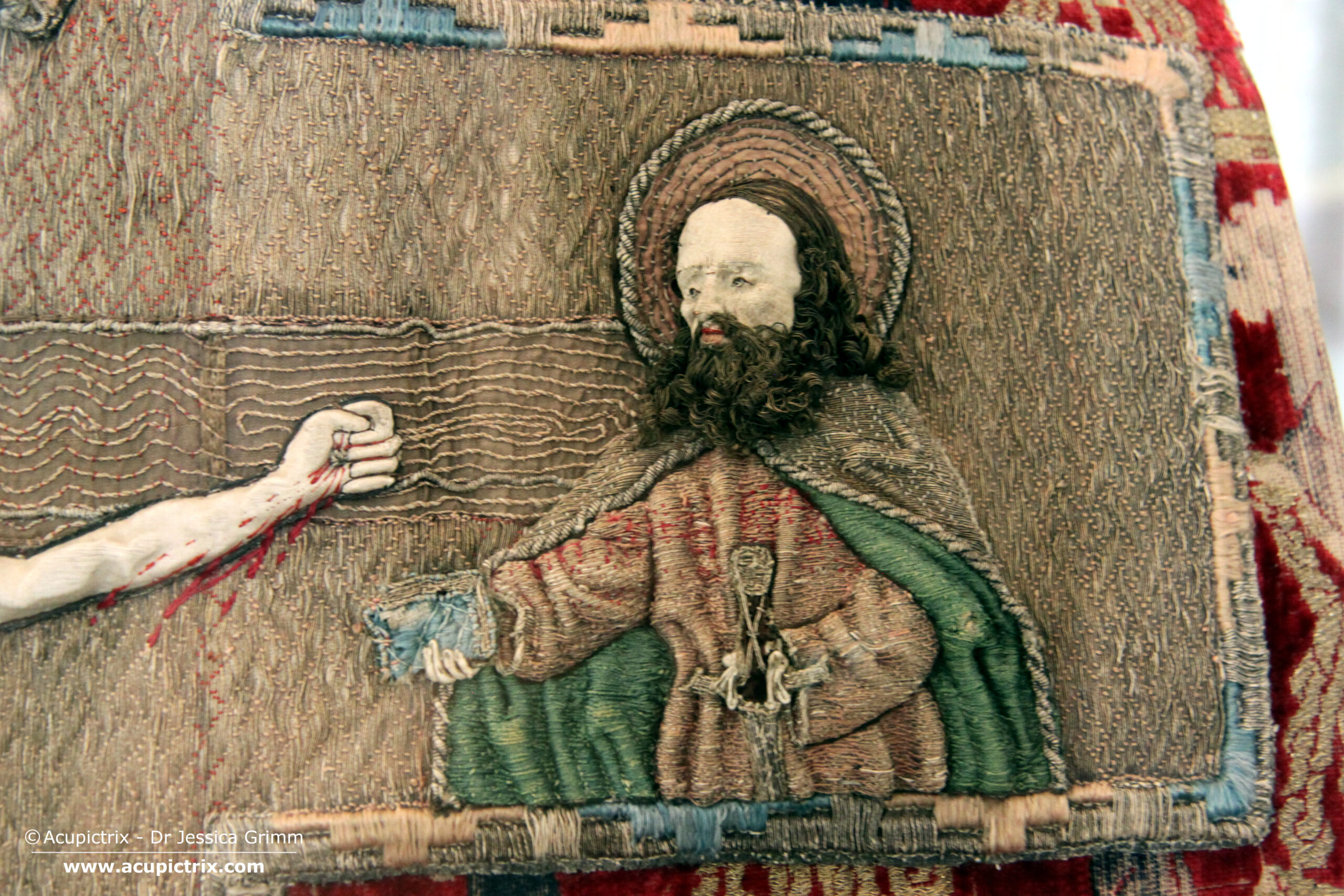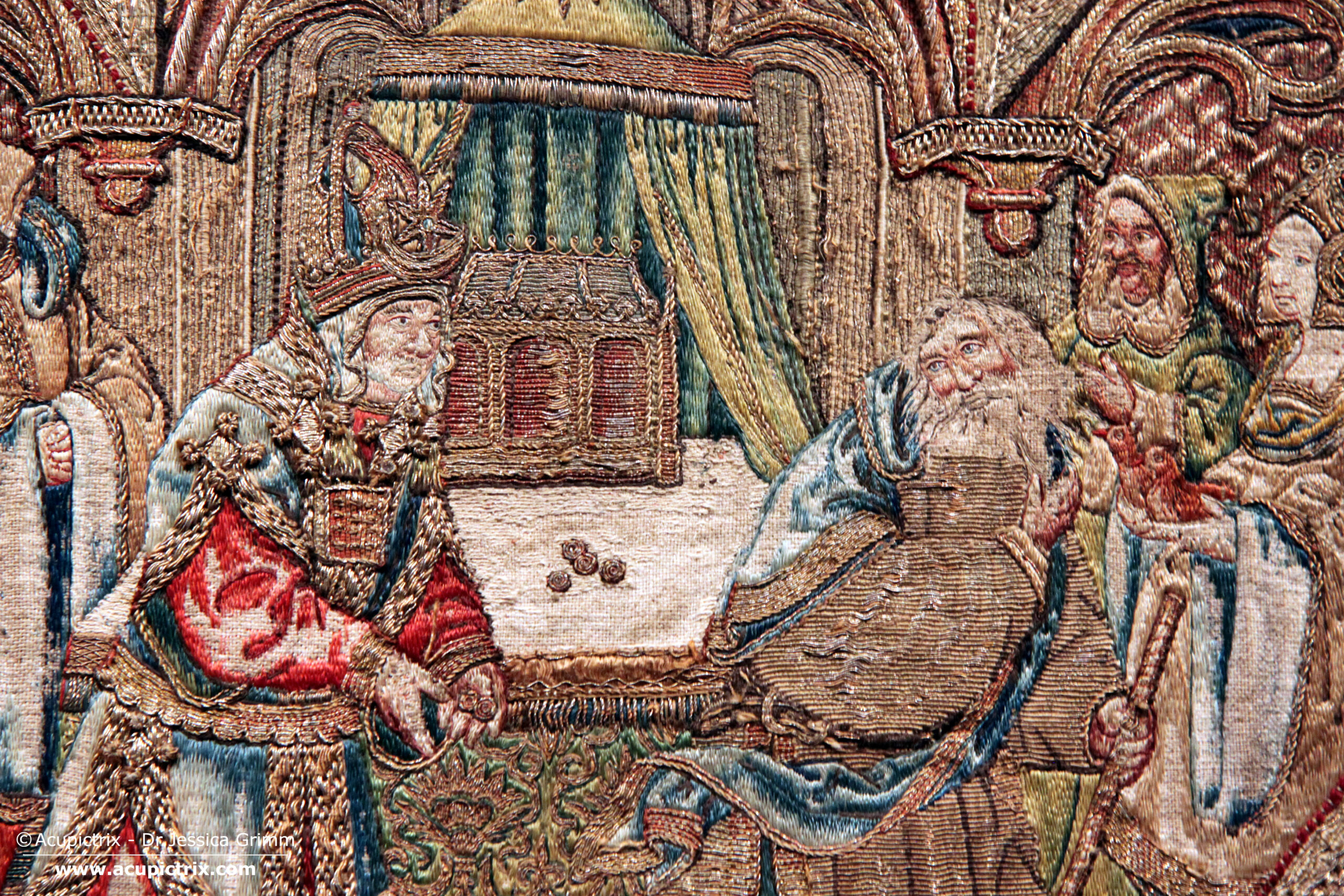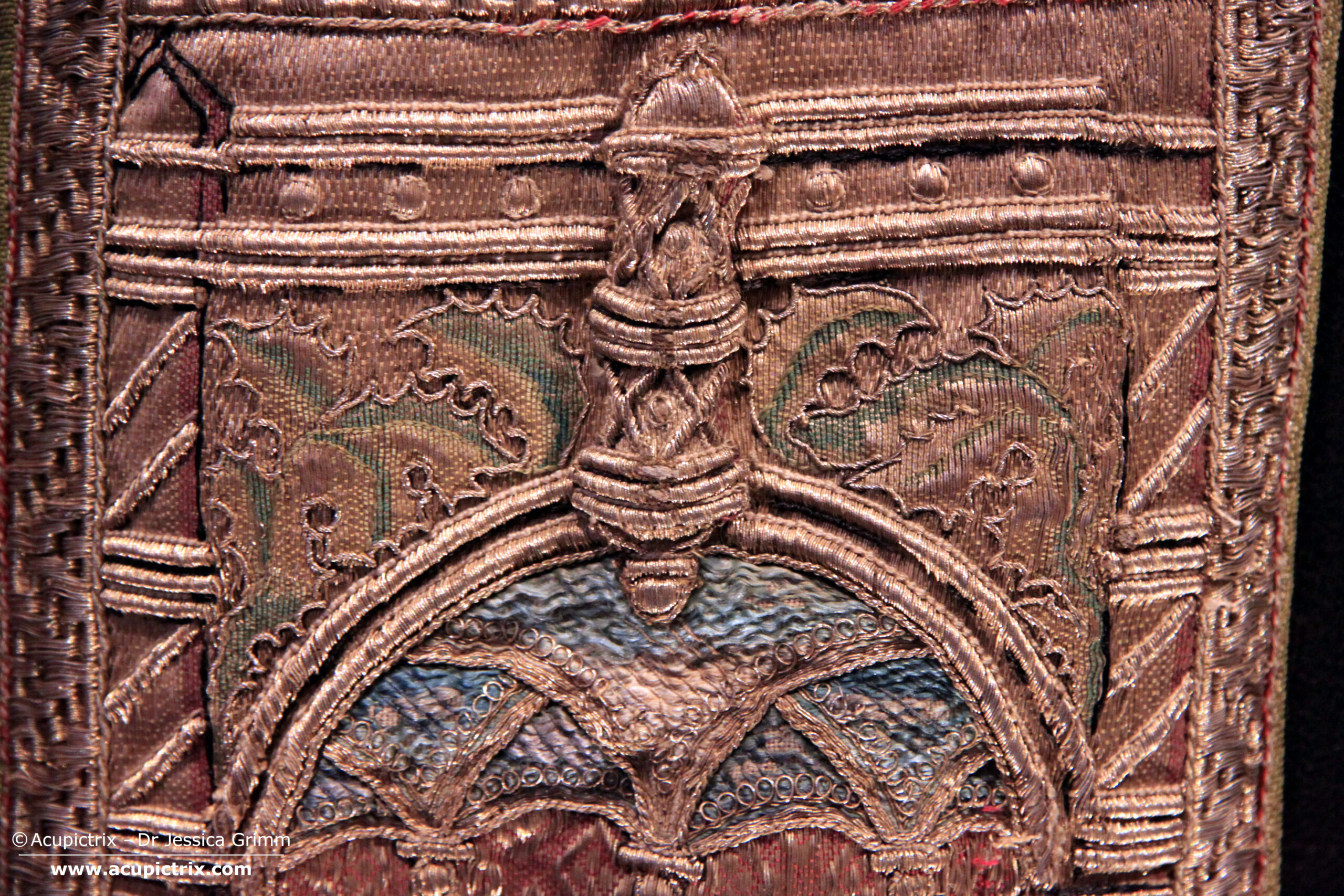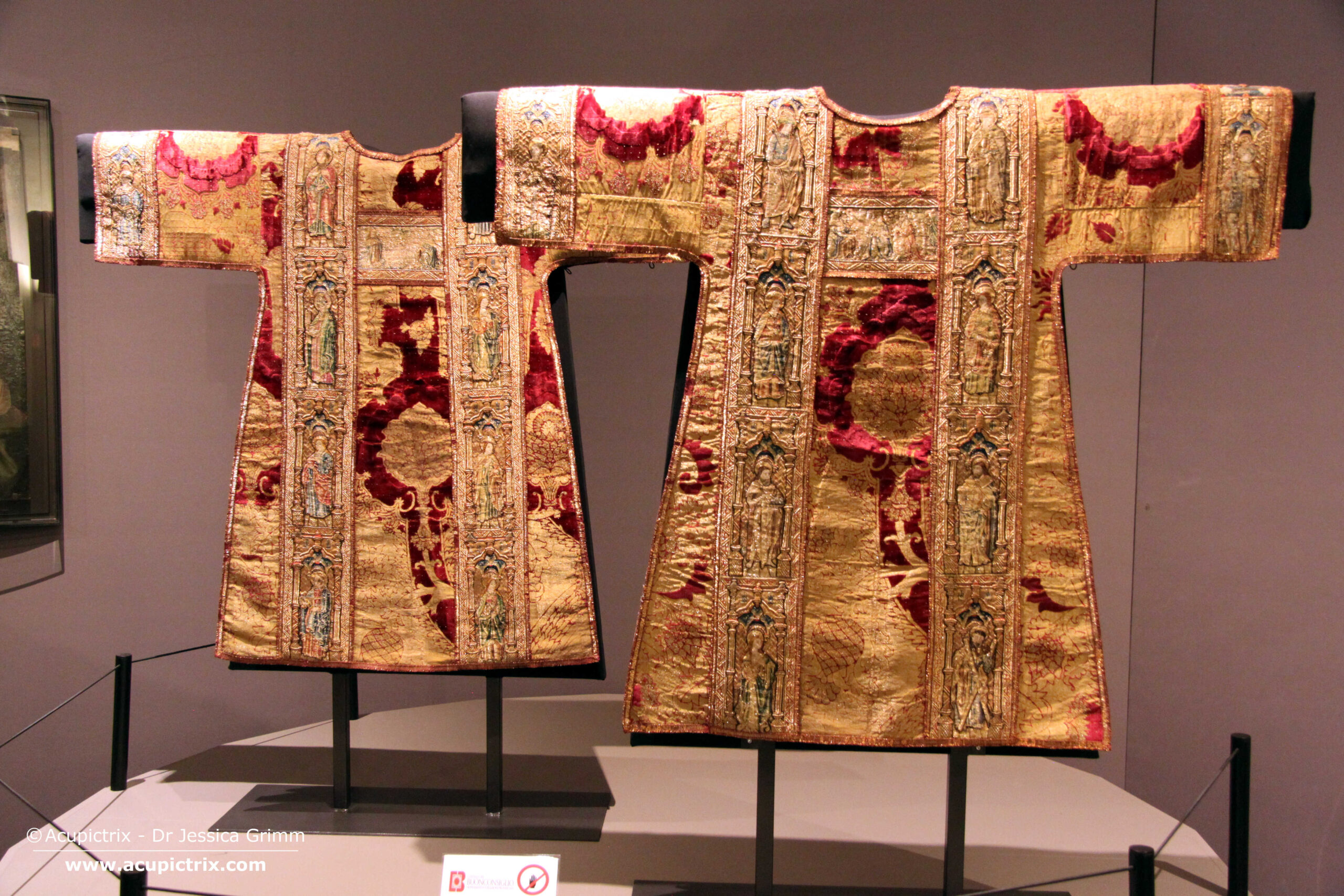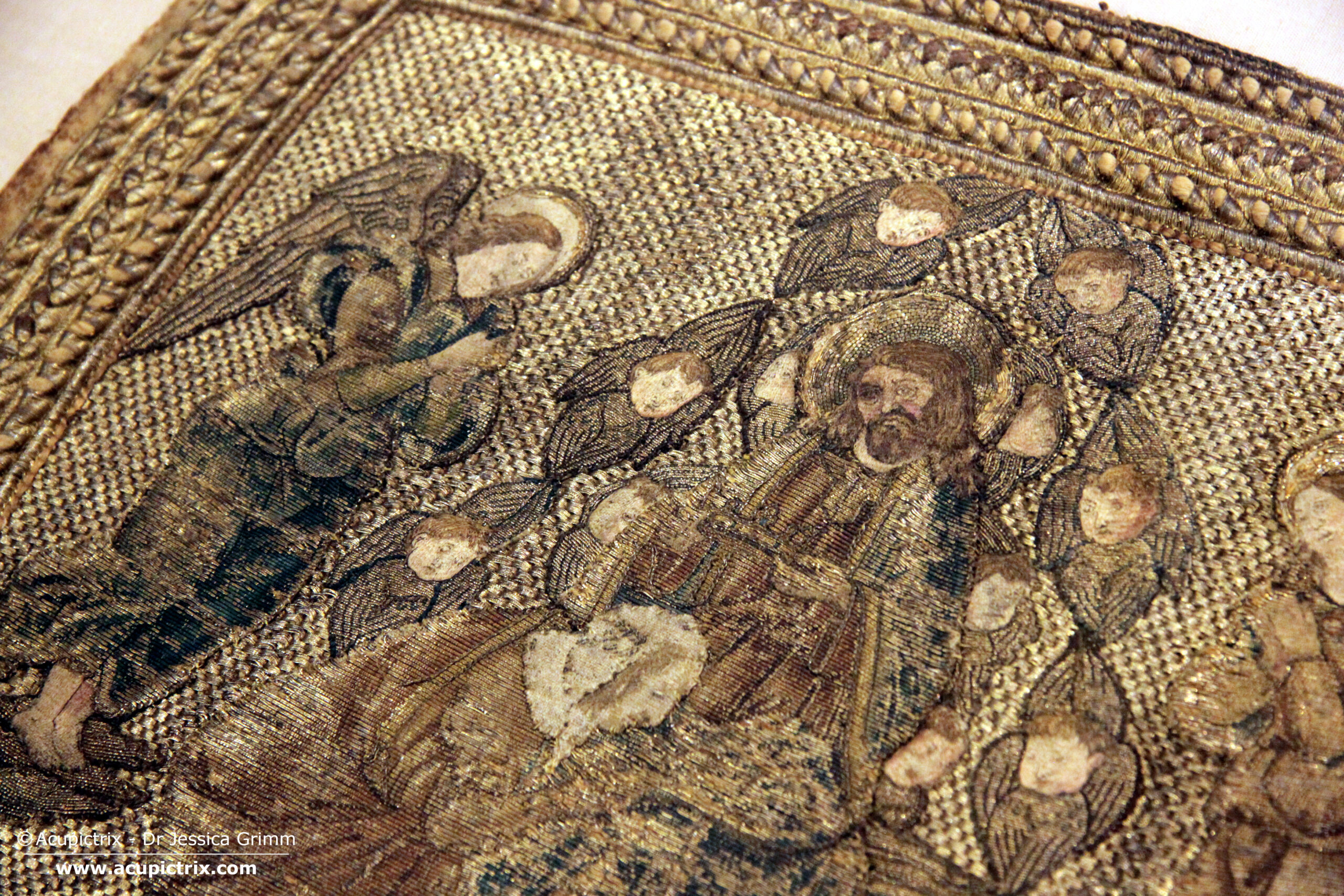Medieval Stumpwork: a chasuble at Domschatz Fritzlar
After having shown you a chasuble cross and a chasuble with outstanding medieval stumpwork, you might feel a little disappointed with this week’s chasuble from Domschatz Fritzlar. Although perhaps not immediately apparent, the embroidery, likely made around AD 1500 in Germany, is actually quite unique. It combines mass-produced standardised design Read more
